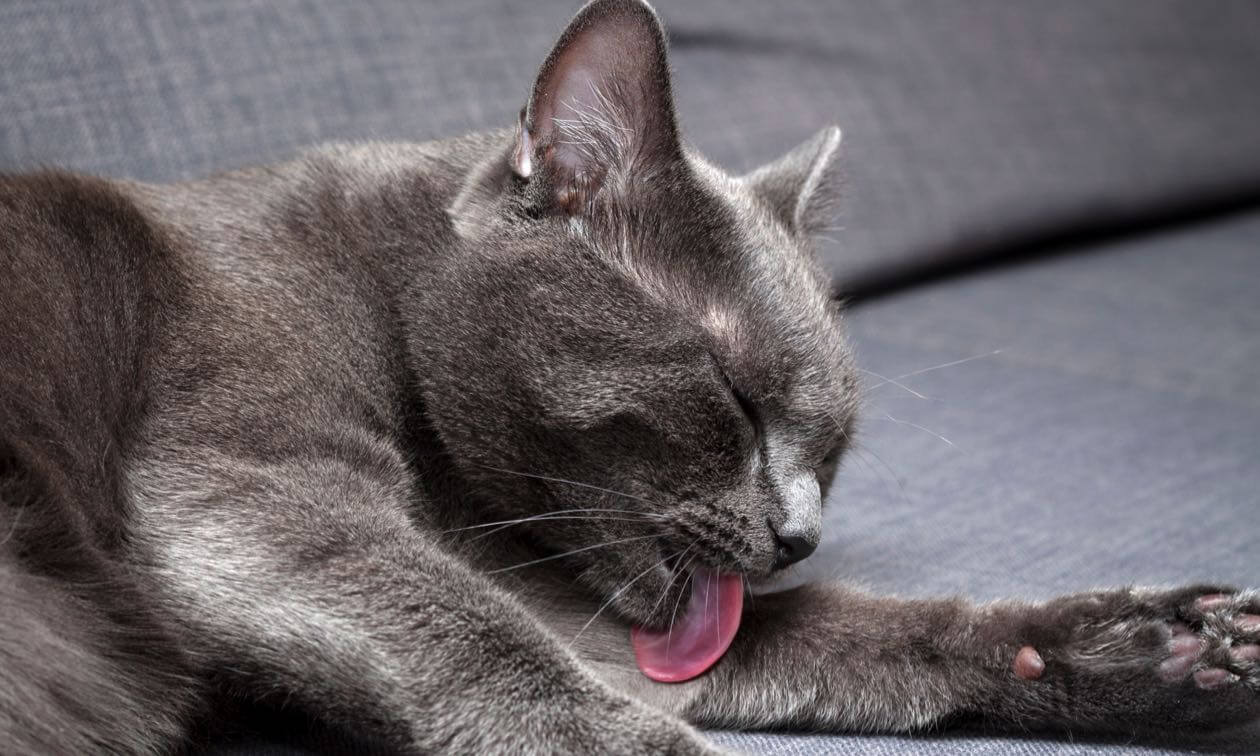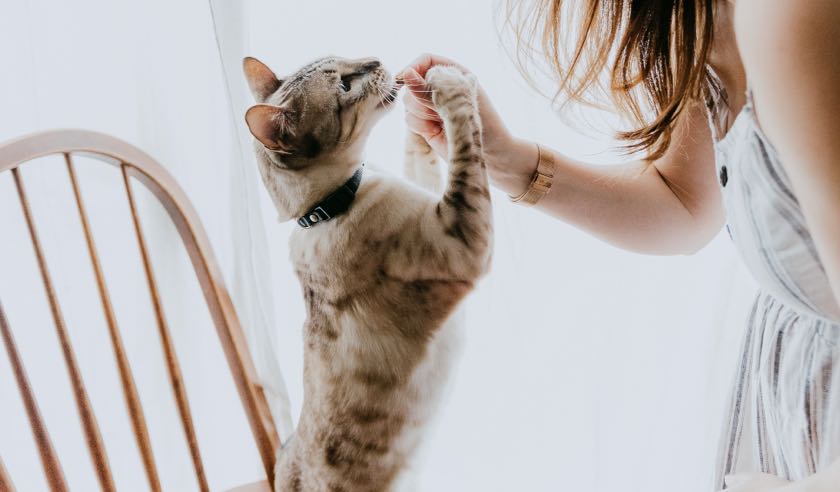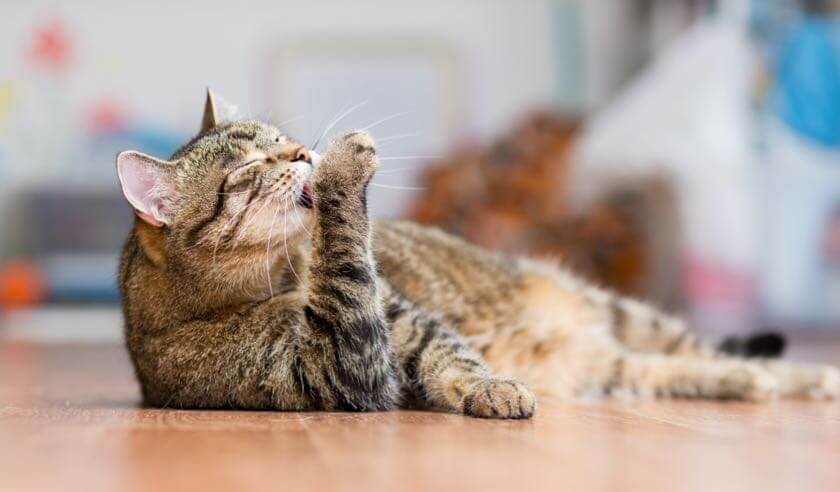Cats are known to be meticulous groomers, seemingly ready to strut down the runway at feline Fashion Week. But what does it mean when grooming goes too far? If your cat might be overgrooming, it's time to pay attention, since they may be letting you know something's not right. Medical issues, anxiety, and fear can contribute to overgrooming in cats. Knowing the difference between normal and too much grooming is your first step in addressing the problem.
Regular Cat Grooming Vs. Overgrooming
Grooming is normal and natural for cats (and some cats do it a lot). Grooming fulfills many valuable functions:
- Removes Debris off the Fur
A cat's tongue and saliva are used to lick their fur to get rid of foreign items, like dirt, loose hair, and parasites such as fleas. - Prevents Matting
Grooming prevents clumps of hair from becoming entangled and knotted. The development of mats can be uncomfortable and even painful for your cat. - Maintains Healthy Skin
Licking the fur stimulates the production of sebum (an oily, waxy substance produced by the body's sebaceous glands, which coats, moisturizes, and protects the skin). - Thermoregulation
Spreading saliva over the body helps keep a cat cooler on a warm day. - Self-Soothing
Some cats groom themselves as an expression of comfort in a relaxing environment. However, the opposite can be true — when nervous or distressed, a cat may start grooming themselves as a displacement behavior. - An Indicator of Health
Healthy cats normally groom themselves. An untidy appearance can be a sign of illness, orthopedic issues like arthritis, or obesity.
Overgrooming is the term used when a cat's grooming behavior goes beyond normal for coat maintenance and the other functions above. It may even seem obsessive, with actions like licking, chewing, plucking, and/or biting areas of hair or skin. It's often difficult to get the cat to stop. The result can be damaged fur shafts, hair loss, and sometimes even skin sores. This behavior can also interfere with a cat's daily functions, like eating, playing, and sleeping.
Why Is My Cat Overgrooming?
Both medical and behavioral issues may be the cause of overgrooming. Behavioral issues are a diagnosis of exclusion — that means there is no specific diagnostic test to determine whether it is a behavioral problem. Therefore, it’s critical to rule out all potential medical causes first.
Medical Reasons Cats Overgroom
Medical causes of overgrooming usually cause the cat to itch or to be painful. Some examples include:
- Allergies
This can be allergies to food, parasites like fleas, or, like people, pretty much anything in the environment (pollens, molds, mildews, dust mites, etc.). - Parasites or Skin Infections
External parasites like skin mites, fleas, fungi (e.g., ringworm), bacteria, or yeast can cause itching and discomfort. - Inflammation
A common example is eosinophilic granuloma complex. - Pain
Pain can trigger overgrooming, especially when directed at a specific body part. For example, cats with bladder infections may lick excessively around the genital or belly area due to irritation/pain from the infection.
Any illness can be a source of stress to a cat, and stress can lead to overgrooming. It’s important to have the general health of your cat evaluated by your family veterinarian. They will guide you on the best way to determine if your cat's overgrooming is related to a medical condition or not.
Behavior or Emotional Reasons Cats Overgroom
Behavioral and emotional causes of overgrooming are often given the name "psychogenic alopecia." This diagnosis is reached after medical issues have been ruled out, and it is assumed that the overgrooming is caused by a mental or emotional issue.
The types of stress that cause psychogenic alopecia is usually chronic and consistent. Since cats are especially sensitive to change, anything new, moved, or altered in their environment or routine could be the culprit. Some examples include:
- The absence of a human family member due to death, divorce, longer work hours, vacation, or departure for college
- The absence of another household pet due to death or rehoming
- A home renovation project or even just rearranging the furniture
- A new family member (human or animal)
- Conflict with other household pets
- Moving to a new home
- Moving the litter box, food bowl, or another resource to another location
- New or loud noises or animals outside the home
- Lack of environmental enrichment
The specific stressor cannot always be identified, and each cat's stressors are different. Also, overgrooming can occur when you are not watching, making it more difficult to detect and address.
How to Stop (and Prevent) Cat Overgrooming
Since behavioral causes of overgrooming are stress-related, you'll need to address that stress to overcome the problem. Consider the following:
- Remove the Stressor(s), if Possible
This may take some deep thinking since the stressor(s) are not always obvious. Give it a concerted effort and try to view the world from your cat's perspective to identify triggers. Consider things like the environment, relationship with other people and pets, boredom, outside/stray cats, recent changes, etc. - Provide Environmental Enrichment
This can include things like interactive playtime, foraging adventures and food puzzles, cozy spots to rest, secret places to hide, an opportunity to climb cat trees, and safe outdoor play areas. - Maintain a Routine
When possible, keeping a consistent daily schedule for your cat may help a great deal. They are creatures of habit, after all! This means your cat is fed and play sessions are conducted at approximately the same time. - Provide a House of Plenty
Give your cat lots of resources. This includes access to fresh water, food, litter boxes, scratching posts, toys, treats, vertical space, and cozy places to sleep. - Introduce Changes Gradually
For example, if you want to rearrange the furniture in your living room, do one piece at a time, waiting about a week before moving the next piece. If you've just moved to a new home, confine your cat for approximately one week (with all the resources they'll need) before introducing them to the rest of the home. - Never use Punishment
Punishing your cat for overgrooming will only create more stress and potentially damage your relationship. If your cat starts overgrooming, distract them with some interactive play or mind work to redirect their anxious energy in a positive way. - Leave your Scent Around
If your cat is less likely to overgroom when you're around, leaving them alone with an item of clothing with your scent on it can help them feel more secure. - Use Synthetic Pheromones
These mimic the facial pheromones that cats use to mark their territory and keep themselves calm. - Consider Anti-Anxiety Medication
Anti-anxiety medication can be helpful when used in conjunction with behavioral modification techniques. Discuss this with a veterinary behaviorist or a veterinarian. In most cases, once your cat stops overgrooming, they eventually can be weaned off the medication.
The treatment for overgrooming initiated by behavioral causes may not be a permanent solution. If overgrooming does recur, it could indicate that your cat is feeling stressed again, requiring evaluation for any new or ongoing causes, and appropriate treatment adjustment.
If you cannot find a trigger and resolve the overgrooming on your own, consider working with a certified feline training and behavior consultant or veterinary behaviorist. They can help you track down those potential triggers and develop a plan to ease overall stress and anxiety.
ZPC-02441



.jpg)

